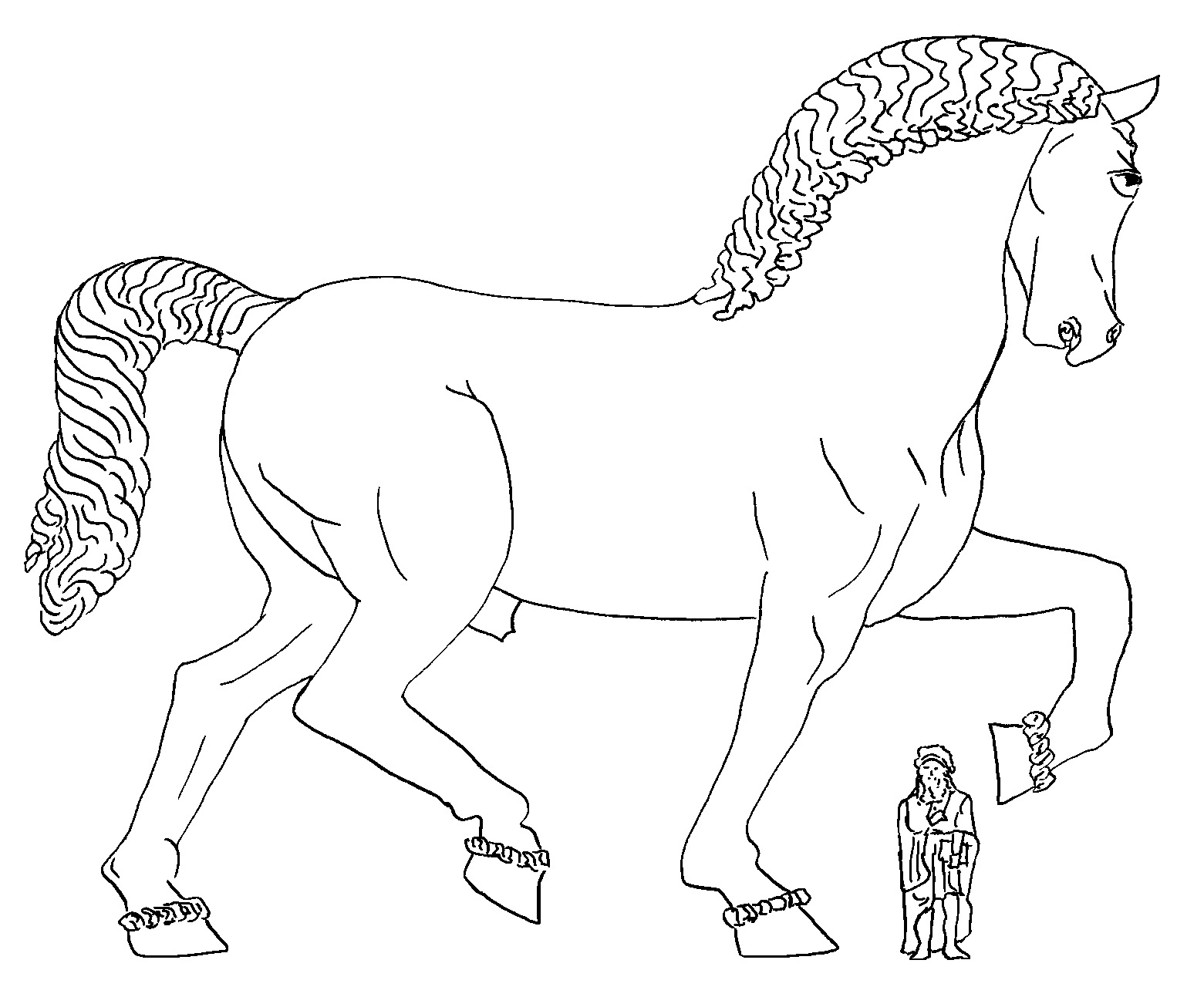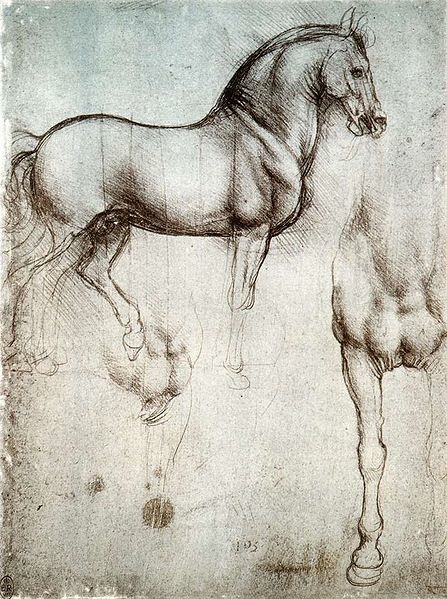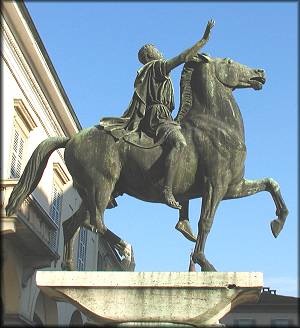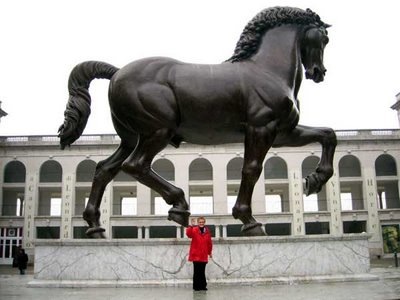
 Leonardo’s reputation as a sculptor rests on a statue of a horse that he never finished. His patron, who was to have eventually been portrayed on the much-greater-than-life-size Gran Cavallo, had war and money troubles and swiped Leonardo’s bronze for cannon-building.
Leonardo’s reputation as a sculptor rests on a statue of a horse that he never finished. His patron, who was to have eventually been portrayed on the much-greater-than-life-size Gran Cavallo, had war and money troubles and swiped Leonardo’s bronze for cannon-building.
Leonardo thought that a giant rearing horse would be cool, but couldn’t figure out how to make it work structurally, and he ended up showing the horse in a trot (left), after an antique horse sculpture in Pavia that he admired. “The movement is more praiseworthy than anything else. The trot almost has the quality of a free horse.”
 The modern Regisole, shown here on the left, dates from 1937, as the original was destroyed in the Jacobin uprisings.
The modern Regisole, shown here on the left, dates from 1937, as the original was destroyed in the Jacobin uprisings.
Fritjof Capra, whose The Science of Leonardo I’ve been reading, has Leonardo meticulously measuring “several superb thoroughbreds” for his design. Oops—not in the fifteenth century he wasn’t. (Perhaps a kind reader would speculate on the breeding of the horses in these pictures.)
The statue was finally cast, without a rider, which Leonardo intended to add later, in 1999 and stands in Milan.

Speculatively, from a modern perspective, this horse looks to be of Spanish extraction, of an Andalusian type. Definitely not what we would call a Throughbred. I believe many non-horsemen think a TB refers to any deliberately bred horse. This might be the “Ginetto grosso di messer Galeazzo,” the big “genet” of Messer Galeazzo, which was a kind of Spanish saddle horse. Or, it might the the Sicilian horse he drew several times, or neither.